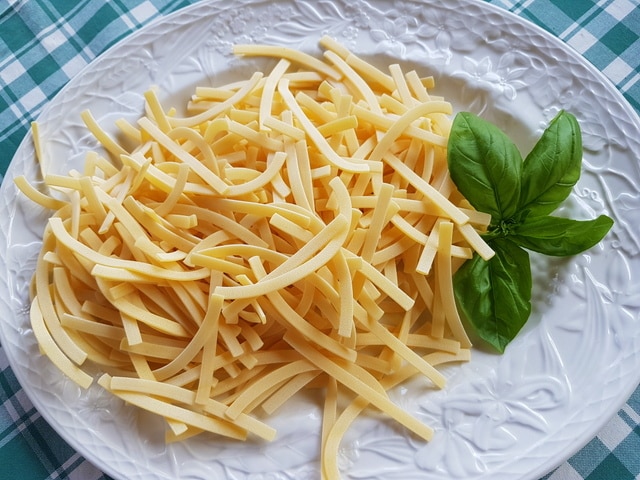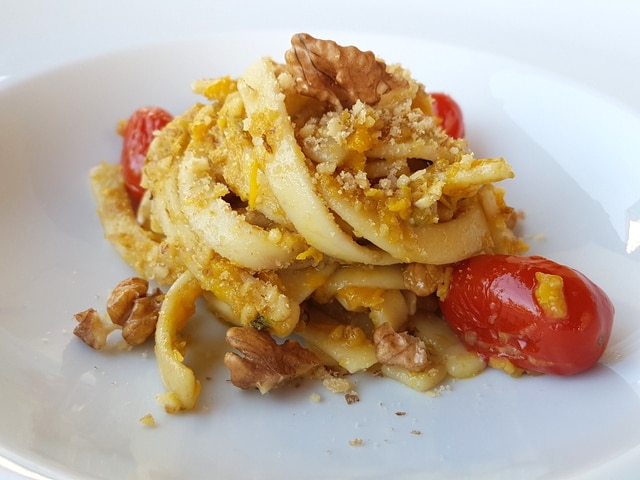Scialatielli
scialatelli
Scialatielli or scialatelli ɛlli]), also known as sciliatielli or scivatieddi, is a short, thick pasta with a rectangular cross section and an almost straight but slightly irregular, slightly curvy shape. It is typical of modern Campanian cuisine, having originated on the Amalfi Coast as a chef's specialty, but it has also spread in nearby regions such as Calabria and Basilicata (respectively, in the area of Catanzaro and Potenza). Scialatiello (singular for scialatielli) may come from Neapolitan scigliatiello or sciliatiello, a derivative of the verb sciglià ('to ruffle'), and it roughly translates to "ruffled": scialatelli look like "ruffled" strips of pasta when set in a dish, as each strip has a slightly irregular shape after being hand-made and plainly cut by a kitchen knife. Another theory about this pasta name is that it comes from Neapolitan scialà ('to enjoy' or 'to spend a lot') and tiella ('pan'), though it might be folk etymology resulting from a linguistic corruption of the original word.[original research?]
Source: Wikipedia
Recipes










